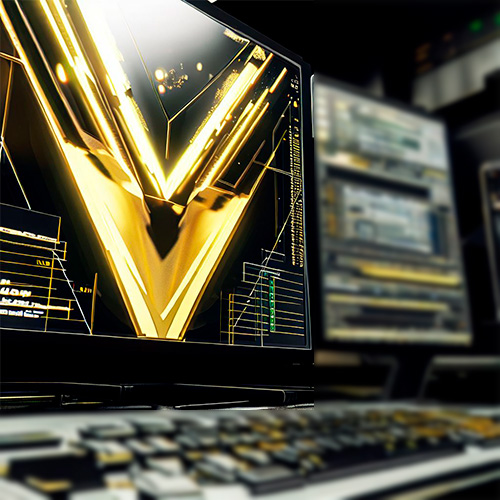
Testing hardware performance
How to test hardware performance during rendering?
Measuring hardware performance during rendering is crucial for assessing the efficiency and capability of your computer system, especially when working with resource-intensive tasks like 3D rendering or video editing. If your hardware performance test isn’t what you expected, you can lift intensive rendering off your workstations and save resources for more productive work. With Aura Computing you’ll access a fully environmentally friendly, over 70000-core CPU & GPU render farm network that. You will save time and hand over the work to the customer faster, improving job circulation and business profitability, and all with an environmentally clean conscience!
Measuring hardware performance during rendering is essential for optimizing resources, ensuring high-quality output, managing budgets, and making informed decisions about hardware upgrades or replacements. It ultimately contributes to a more efficient and productive rendering workflow.
To do this effectively, you can utilize various software tools and techniques to gather performance metrics. Here’s a step-by-step guide on how to measure hardware performance during rendering:
10 tips for testing your hardware performance
- Select Rendering Software: Choose the rendering software you plan to use. Popular choices include Autodesk Maya, Blender, Adobe Premiere Pro, or any other software specific to your rendering needs. Different software may have their own performance measurement tools or plugins.
- Benchmark Projects: Create or use benchmark projects that are representative of your typical rendering workloads. These should contain the same complexity and elements as your real projects, such as 3D models, textures, and effects.
- Performance Metrics: Determine which hardware performance metrics are most relevant for your rendering tasks.
- Monitoring Tools: Use monitoring tools to measure these metrics while rendering. Some software has built-in performance monitoring features, while others may require third-party tools.
- Render and Collect Data: Start the rendering process with your benchmark project and collect performance data simultaneously. Note the metrics at regular intervals, or use logging features if available in your monitoring tools.
- Analyze Data: After rendering is complete, analyze the collected data to identify performance bottlenecks and areas for improvement. Look for trends, spikes, or consistently high usage of hardware components.
- Optimize Hardware and Software: Based on your analysis, consider optimizing your hardware or software configuration to improve rendering performance. This may involve upgrading components, adjusting settings, or optimizing your rendering workflow.
- Repeat Testing: To validate any changes made, it’s essential to conduct multiple rendering tests with different scenarios and projects. This ensures that your system’s performance improvements are consistent and not limited to a specific use case.
- Keep Software and Drivers Updated: Ensure that your rendering software, graphics drivers, and operating system are up-to-date. Updates can bring performance enhancements and bug fixes.
- Consider Overclocking (with caution): If you’re comfortable with it, overclocking your CPU or GPU can potentially boost rendering performance. However, this should be done cautiously, as it can also increase the risk of hardware damage and instability.

Which performance metrics are important?
- Render Time: The time it takes to complete the rendering process.
- Frames per Second (FPS): For real-time rendering, this measures how smoothly your system can display frames
- CPU Usage: The percentage of CPU resources dedicated to rendering.
- GPU Usage: The percentage of GPU resources used during rendering.
- Memory Usage: The amount of RAM utilized during rendering.
- Disk I/O: Measure read/write speeds on your storage device, as slow disk access can bottleneck rendering.
What are monitoring tools?
- Task Manager (Windows) / Activity Monitor (macOS): Provides real-time CPU, memory, and disk usage.
- GPU-Z: Monitors GPU performance, temperature, and other GPU-related data.
- Third-party hardware monitoring software: Applications like MSI Afterburner or HWMonitor can provide detailed information on CPU, GPU, and other hardware components.
Get in touch with us today
Want to know more about specific industries? See Rendering, Banking and Insurance, or Game Development pages for more details.